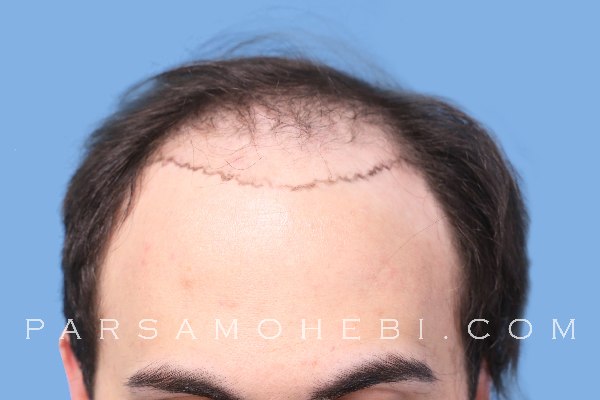What to Expect After a Hair Transplant- The Different Growth Stages Explained
 Getting through a hair transplant procedure is just the start of new hair growth. We wish it could be as easy as having the transplant procedure done and new hair appears, but unfortunately, it’s not as simple or immediate. Transplanted hair goes through different stages of growth. From healing, to resting, and finally growth.
Getting through a hair transplant procedure is just the start of new hair growth. We wish it could be as easy as having the transplant procedure done and new hair appears, but unfortunately, it’s not as simple or immediate. Transplanted hair goes through different stages of growth. From healing, to resting, and finally growth.
We share a general timeline and what to expect during each stage of your newly transplanted hair—starting with the first month after your hair restoration surgery.
The Beginning Stage (Month 1)
It’s completely normal for some of the transplanted hair to fall out after the procedure. By day 5-7 post-procedure, the newly transplanted follicles are safely embedded in the scalp, and they can’t be dislodged at this point. But the hair follicles will begin to enter into different growth stages, starting with the resting phase (telogen), which results in losing their hair shafts.
You may see some pimple-like lesions on the transplanted or donor area; they are called folliculitis. They are similar to the kind of pimples that show up on your face or body and will naturally subside on their own.
The Resting Stage (Month 2-3)
This stage could be noted in most patients who receive a hair transplant. The follicles go into the resting phase for up to 8-10 weeks. The transplanted hair shaft will fall out during this period and the patient may not see any hair but that doesn’t mean the transplanted follicles are gone. The most vital part of the follicle that generates the new hair is safely embedded and will grow a new hair after this resting phase.
However, using simultaneous extraction and placement of hair grafts with a FUE hair transplant has helped many patients to skip this initial resting phase and they could experience continuous growth from the day of their procedure.
The appearance of the treated area may look slight uneven to start with, but you can rest assured the hair will gradually become thicker and fuller within the next few months.
Occasionally, some patients may experience thinning or loss of the hair surrounding the donor and transplanted area. This hair loss is referred to as shock loss, a natural occurrence when the scalp goes through trauma and a hair transplant is traumatic.
It is important to note that shock loss can happen with or without a hair transplant. Any stress can cause hairs to fall out. It’s just your body’s way of responding to stress. But a person with active hair loss (balding) will be more sensitive to hair loss and their hair can fall out quicker than average for a few months after a procedure.
Your hair restoration surgeon may prescribe minoxidil (Rogaine) or finasteride (Propecia) as a proactive and preventative measure to prepare for potential hair loss due to stress on the scalp.
6 Months After the Hair Transplant
Patients with complete baldness will notice budding hair growth in the transplanted area in the first 2-3 months, as the hairs will reveal the shape of the new hairline. During this period, it can be both exciting to see the hair transplant finally take shape, yet still, the new hair length is too short to blend with your normal hair.
After the sixth month, the new hair will continue to grow longer and start to cover areas of baldness, and blend with other areas of your hair. The new hair growing in is still not the ultimate thickness or length.
Hair Transplant Growth (Month 7-12)
At this stage, your hair will continue to grow longer, but the textures may evolve and change as they become thicker or may start to texturize to their natural wave or shape. By the end of the twelfth month, the transplanted hairs will look natural and fully blend with your entire head of hair. The hair can be styled or trimmed to your liking.
The Final Stage (Month 13-18)
This is the final stage of hair growth when you see the final results of the hair restoration process fully developed. The transplanted hair will be thicker, longer, and more extensive than what you have ever experienced before. The hair you have always envisioned is now your reality.
The Takeaway – Hair Transplant Stages
Hair transplant surgery is just one part of the entire hair restoration process. After the actual transplant procedure is completed, it’s the beginning of a whole new phase of hair growth in stages.
And with each stage of the hair transplant growth, comes with their own set of discoveries and experiences. But by the end of the year-long wait, all the hair budding moments or awkward hair patches of growth will be well worth it when you see the final results of your fully restored head of hair.